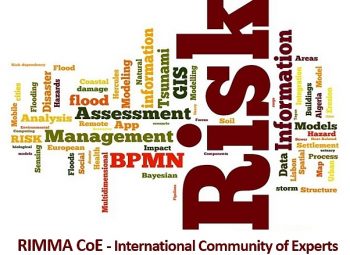Interoperable Europe Act Took Effect April 11, 2024
REGULATION (EU) 2024/903 OF THE EUROPEAN PARLIAMENT AND OF THE COUNCIL of 13 March 2024
laying down measures for a high level of public sector interoperability across the Union
(Interoperable Europe Act)
(8) A new governance structure, with the Interoperable Europe Board (the ‘Board’) at its centre, should be established and should have a legal mandate to drive, together with the Commission, the further development of cross-border interoperability in the Union, including the European Interoperability Framework (EIF) and other common legal, organisational, semantic and technical interoperability solutions, such as specifications and applications.
Furthermore, this Regulation should establish a clear and easily recognisable label for certain interoperability solutions (Interoperable Europe solutions). The creation of a vibrant community around open government technology solutions should be fostered.
(12) Cross-border interoperability is not solely enabled by means of centralised digital infrastructures in the Member States, but also by means of a decentralised approach. This entails the need for trust between public administrations, allowing for data exchange between local administrations in different Member States without necessarily going through national nodes. Therefore, it is necessary to develop common interoperability solutions that are reusable across all administrative levels. Interoperability solutions encompass different forms ranging from higher-level tools like conceptual frameworks and guidelines to more technical solutions such as reference architectures, technical specifications or standards.
Moreover, concrete services and applications, as well as documented technical components such as source code, including artefacts and artificial intelligence models can be interoperability solutions, if they address legal, organisational, semantic, or technical aspects of cross-border interoperability.
Needs for cross-border digital interactions are increasing, which requires solutions that can fulfil those needs. This Regulation intends to facilitate and encourage exchanges at all levels of administration, overcoming cross-border barriers and administrative burdens, thereby increasing the efficiency of public services across the Union.
(13) Interoperability facilitates the successful implementation of policies, in particular those with a strong public sector connection, such as justice and home affairs, taxation and customs, transport, energy, health, agriculture, and employment, as well as in business and industry regulation. However, a single sector interoperability perspective is associated with the risk that the adoption of different or incompatible solutions at national or sectoral levels will give rise to new electronic barriers that impede the proper functioning of the internal market and the associated freedoms of movement.
Furthermore, it risks undermining the openness and competitiveness of markets and the delivery of services of general interest to citizens and business. Therefore, this Regulation should also facilitate, encourage and apply to cross-sector interoperability, thereby supporting the removal of barriers, incompatibilities and the fragmentation of digital public services.
(25) Union entities or public sector bodies that search for interoperability solutions should be able to request from other Union entities or public sector bodies the interoperability solutions those bodies or entities use such as good practices, specifications, and software code, together with the related documentation. Sharing should become a default. In addition, Union entities or public sector bodies should seek to develop new interoperability solutions or to further develop existing interoperability solutions.
When doing so, they should prioritise solutions that do not carry restrictive licensing terms where such solutions are equivalent. Nevertheless, sharing interoperability solutions should not be understood as a requirement for Union entities and public sector bodies to give up their intellectual property rights.
(51) An Interoperable Europe Agenda should be developed as the Union’s main instrument for coordinating public investments in interoperability solutions and setting out the roadmap for implementing this Regulation. It should deliver a comprehensive overview of funding possibilities and funding commitments in the field, integrating where appropriate the related Union programmes. This should contribute to creating synergies and coordinating financial support related to interoperability development and avoiding duplication at all levels of administration.
Quoted from the english language version of the Act.
https://eur-lex.europa.eu/legal-content/EN/TXT/PDF/?uri=OJ:L_202400903
All EU languages,formats and authentic versions:
https://eur-lex.europa.eu/legal-content/EN/TXT/?uri=CELEX%3A32024R0903
Full references to major documents
https://joinup.ec.europa.eu/interoperable-europe/news/interoperable-europe-act-enters-force
FAQs
https://joinup.ec.europa.eu/interoperable-europe/faqs
The Digital Europe Programme (DIGITAL) currently provides funding for developing and maintaining of EU public sector interoperability, such as interoperability assessment tools, semantic vocabularies, and GovTech.
—————————————————————————————————–
Remarks:
The Interoperable Europe Act applies to all regional levels – from local to european. (overruling concerns that pretend “structural incompatibilities” in some european countries)
After all, this is an Information Infrastructure measure of coordination, enabling – not unduely intermingling with – seamless and effective “just-in-time” european administration work.
Although discussions of the Interoperable Europe Act run since several year, involvement of the RISK domains (public, private, scientific) was not really visible
(although quite a lot of other issues of that Act touches essential “HOME” (Interior) administration tasks).
Taking into account growing activities in trans-border complex training programmes and massive multi-national exercises in the civil protection domains
(see e.g. „Full-Scale Earthquake Response Exercise in the cross-border-region of Germany, Austria and Switzerland (MAGNITUDE)“ funded within the HORIZON EUROPE framework)
There are formal european obligations now to start acting for Information Interoperability in the RISK domains and at the same time, substantial additional money together with educational, methodological and administrative guidance of design and implementation is available.
I even more stronger are sure that RISK Domains Digital Strategies together with compatible roadmaps should be timely negotiated by all-of-society actors (administrations, organizations, Private Sector, NGOs etc.)
Horst Kremers
